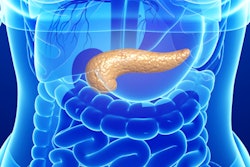Dear Women's Imaging Insider,
As winter approaches and the likelihood of COVID-19 booster programs grows across Europe, cases of vaccine-related axillary adenopathy look set to rise sharply again. For radiologists, it's vital to differentiate reactive axillary lymphadenopathy from breast malignancy, nonbreast malignancy, and benignities that share similar imaging appearances because doing so has major implications for patient management.
Experts from London and Los Angeles have given practical and timely advice on the optimum use of imaging in this area. Get the full story in today's top article.
Breast imaging specialists have long been aware of the need to establish a good relationship with their patients. But in general, radiologists have allowed that link to become very tenuous, and they have almost hidden behind the clinician, according to Dr. Giles Maskell, a regular columnist on AuntMinnieEurope.com. Don't miss our news report on his thought-provoking talk at the annual congress of the British Institute of Radiology (BIR).
Another visionary lecture at the BIR meeting was given by Prof. Paul Sidhu, who urged radiologists not to abandon ultrasound or regard sonographic exams as a chore. If they do this, there will be no turning back, he warned.
The current mood of economic and political uncertainty is taking its toll on the ultrasound equipment market, it seems. After a strong recovery in 2021, this year is proving to be a difficult one for the sector, Business Analyst Mustafa Hassan explained in a recent article.
Meanwhile, a 4D ultrasound study involving fetuses between the ages of 32 and 36 weeks got worldwide media attention last week. If you missed it, catch up by reading our coverage.
When it comes to breast imaging, Nottingham has been a center of excellence for many years. Researchers from the English city have published the results of a potentially groundbreaking new study about the role of radiographers in double reading of mammograms. The analysis may lead screening programs in other countries to consider the use of physician extenders in breast imaging.
In this letter, we've highlighted a small selection of the numerous articles posted in the Women's Imaging Community over recent weeks. Please take a close look at the full list below, and feel free to contact me if you have ideas for future coverage.



















